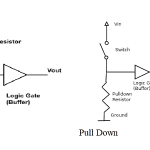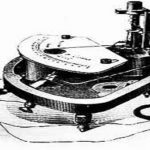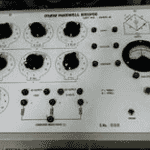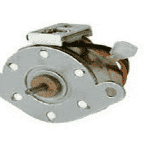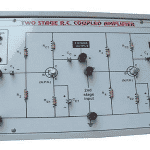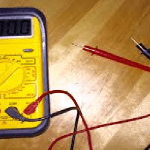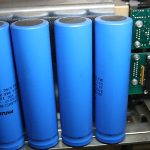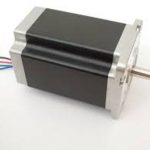Resistor, the most and crucial electronic component which is used in almost every electronic device. Even though our today’s discussion is on pull-up and pull-down resistors, the first and fundamental concept that we need to know is what is a resistor. So, a resistor is the two-terminal device which are used for the measurement of resistance. In the circuits, these resistors are used for the purpose of controlling current levels, voltage distribution, … [Read more...]
Basics of Electricals
What is Ballistic Galvanometer : Construction & Its Working
The ballistic galvanometer is an instrument, which is used to measure or indicate current in a closed circuit. The galvanometer also is known as PMMC instrument, works on the principle of permanent magnet moving coil. The force is generated on the coil, due to Lorentz Force Law. Due to the interaction of fluxes, the pointer in the meter is deflected. Once the pointer is deflected, different torques are exerted on the pointer to make pointer stop at its … [Read more...]
What is a Discharge Lamp : Types & Their Working
In the initial period of 1856, discharge tubes came into existence, but discharge lamps existed in the market in the 1930s. Initially, a French scientist Jean Picard noticed that barren space in the mercury barometer shined as the mercury wiggled when he was carrying it. Many researchers along with Francis Hauksbee attempted to know the actual phenomenon behind it. Francis initially showed a discharge lamp in the year 1705. He demonstrated that either … [Read more...]
What is Self Inductance : Theory, Examples & Applications
In the domain of electronics and electromagnetism industries, inductance is the movement of the electrical conductor to obstruct the flow of current. The current movement develops a magnetic field across the conductor and this field strength is based on the current magnitude and any current variations. From the principle of Faraday’s law of induction, any deviation in the magnetic field along the circuit generates an EMF voltage and this is termed as … [Read more...]
What is Permanent Magnet Stepper Motor : Working & Advantages
In the industrial domain progression, motors hold a very crucial role and their application is enhancing day-by-day. Not only in the power industries, but in many control applications, motors are playing a critical role. With the enhancement of motor control, the usage and implementation also augment every year. So, the stepper motor is a kind of control motor which operates on positioning control having no feedback loop. Stepper motors were formed at the … [Read more...]
What is a Multistage Amplifier : Design, Types & Its Applications
In many of the practical applications, the output of a single-stage amplifier is not sufficient to provide the required bandwidth or gain. So, the enhance either power or voltage gain, the multistage amplifier is required. These kinds of amplifier circuits hold the ability to offer augmented specifications and enhance the circuit performance and so preferred as fundamental building circuits for the development of complicated amplifier networks. This … [Read more...]
Differences between DC Series and Shunt Motors
Before knowing about the differences between DC Series and Shunt Motors, let us start to know what a DC motor is. An electric motor that is powered up by direct current is termed as DC motor. In a detailed view, when a current-carrying conductor is positioned in the area of a certain magnetic field, it gains some torque and tends to have a moment. So, this is the same principle where a DC motor also works on. A DC motor is also named depending on the type … [Read more...]
What is an Ohmmeter : Working Principle & Its Types
Initially, ohmmeters were evolved based on the design construction of a meter known as “Ratiometer”. Ohmmeters under this classification only calculate the value of resistance because they are not simply integrated into the multimeter construction. Insulation testers which depended on a hand moved generator also works on a similar operation. This makes sure that indication was completely autonomous of the developed voltage. Following this, various designs … [Read more...]
What is a Capacitor Bank : Working and Its Calculation
When a number of capacitors are connected together it forms a capacitor bank. They can be connected in series or parallel. A capacitor bank has numerous advantages and applications. Most of the time, these are used for reactive power compensation and power factor improvement. The arrangement of these can be done at substation or power plants. The unit for capacitance in Farads. A capacitor bank of lower scale is frequently used in industrial buildings, … [Read more...]
What is a Stepper Motor – Construction, Operating Principle & Uses
It is a type of motor used for precise movements and positioning of objects mainly in milling machines. It is a brushless type synchronous motor and it is operated stepwise. This step-wise rotation is considered as the step angle. One step angle is the rotation of the shaft per one step. The step angle can be of different degrees depending upon the construction of the rotor and stator teeth. The brushless motor rotates the shaft 360 degrees per one … [Read more...]
